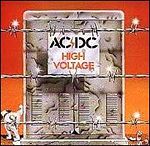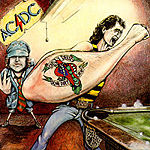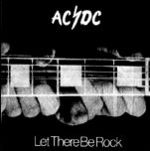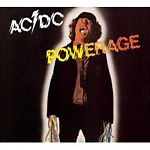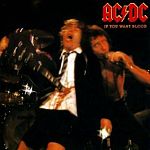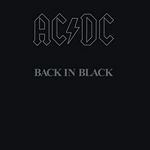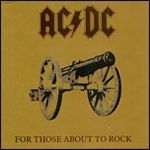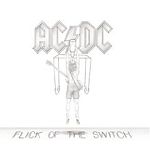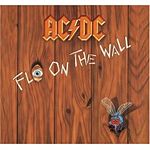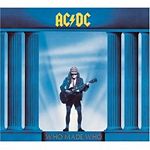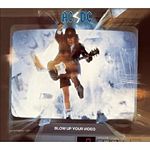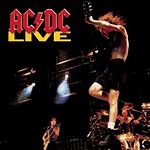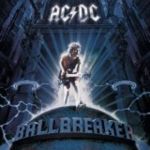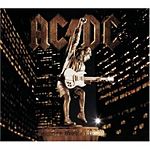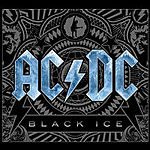Difference between revisions of "AC/DC"
Goreripper (talk | contribs) |
|||
| Line 182: | Line 182: | ||
|} | |} | ||
[[Category:Band List]] | |||
[[Category:Bands from New South Wales|AC/DC]] | [[Category:Bands from New South Wales|AC/DC]] | ||
[[Category:Bands from Sydney|AC/DC]] | [[Category:Bands from Sydney|AC/DC]] | ||
[[Category:Bands now based overseas|AC/DC]] | [[Category:Bands now based overseas|AC/DC]] | ||
Revision as of 23:41, 7 August 2011
Band members
- Current line-up
- Brian Johnson (vocals)
- Phil Rudd (drums)
- Cliff Williams (bass)
- Angus Young (guitar)
- Malcolm Young (guitar)
- Former members
- Chris Slade (drums) (1989 - 1995)
- Steve Young (guitar) (1988)
- Simon Wright (drums) (1983 - 1989)
- Bon Scott (vocals) (1974 - 1980) d. 19/2/80
- Mark Evans (bass) (1975 - 1977)
- Bruce Howe (bass) (1975)
- Paul Matters (bass) (1975)
- Tony Currenti (drums) (1974)
- Russell Coleman (drums) (1974)
- Rob Bailey (bass) (1974)
- George Young (bass) (1973 - 1974)
- John Proud (drums) (1974)
- Peter Clack (drums) (1974)
- Dave Evans (vocals) (1973 - 1974)
- Noel Taylor (drums) (1974)
- Neil Smith (bass) (1974)
- Larry van Kreidt (bass) (1973 - 1974, 1975)
- Ron Carpenter (drums) (1974)
- Colin Burgess (drums) (1973 - 1974)
Website
Formed
Sydney, NSW, 1973
Band information
AC/DC is a band that needs no introduction. As one of the most famous and successful rock bands of all time there is hardly anyone who could not have heard of them. Despite this, much of the band’s history remains muddy, mostly due to the Young brothers’ taciturn attitude to most of AC/DC’s former members, managers and others and their general reluctance to speak in depth about some aspects of the group to all but a few. To this day there remains a cloud over the recording personnel on the debut album and controversy over several other events including the death of Bon Scott.
Malcolm and Angus Young formed AC/DC in November 1973 following the older brother’s stint in a Newcastle band called Velvet Underground that also featured future members of TMG. Drummer Colin Burgess from the Masters Apprentices, American-born jazz bass player Larry van Kriedt and singer Dave Evans made up the first complete line-up and AC/DC played their first show in Sydney on New Year’s Eve 1973. Burgess was either sacked or left soon afterward and a string of drummers continued until well into 1975. Van Kriedt had also departed by February 74; his replacement Neil Smith lasted until April when the line-up solidified with Rob Bailey (bass) and Peter Clack (drums) joining the band. At first harbouring a glam-rock look, AC/DC dispensed with it when learning of Skyhooks’ (a band they despised) predilection for it and in September 1974 after the release of the single “Can I Sit Next to You, Girl” Evans was removed from the group due to his apparent unsuitability and constant personal clashes with manager Dennis Laughlin.
Evans was replaced by Bon Scott, who was known to them through his work with Fraternity and the Valentines. Bailey was fired in November as the band recorded High Voltage. The album features Malcolm playing lead guitar on two tracks ("Little Lover" and "Soul Stripper") as well as bass. George Young and Rob Bailey also played some bass tracks. Drumming was shared between Clack and John Proud (one track each) and Tony Currenti from The 69ers.
In January 1975 AC/DC was booked to appear at the Sunbury Festival but after a physical altercation with Deep Purple’s roadcrew they refused to play and returned to Melbourne the same night. Buster Brown drummer Phil Rudd had joined the band by now, with Mark Evans linking up a few weeks later after short stints from several others including Bruce Howe of Fraternity.
Soon after, AC/DC recorded TNT and in early 1976 signed with Atlantic Records and concentrated their efforts on the worldwide market by heading to England. At first marketing themselves as a punk band, AC/DC was successful almost immediately. High Voltage' and TNT were re-packaged and issued as a single album (High Voltage, although most of the tracks were from TNT) and the band began a relentless cycle of touring and recording that would last until well into the 1980s. Following the recording of the early masterpiece Let There Be Rock, the tensions between Evans and the Youngs resulted in the bassist being dumped from the line-up. Cliff Williams, a British musician who had played in Bandit and the prog band Home, took his place. Williams’ inability to score an Australian work visa would mean AC/DC was unable to play in their home country until 1980. Evans later played in bands like Heaven and Boss and a range of rhythm and blues bands. He was famously snubbed during AC/DC's induction into the Rock N Roll Hall of Fame in 2003 when Malcolm claimed that the band only really started after they got rid of him.
In the meantime, AC/DC concentrated their efforts on conquering the US, a mammoth undertaking that almost ended the band more than once. However, the slicker production and more commercial direction of 1979’s Highway to Hell finally opened the door to North American airplay and by the end of the year AC/DC was on the way to becoming one the biggest bands in the world. As work began on the next album however, Bon Scott was found dead in a car in London on the morning on February 19, 1980. The circumstances of his death were never fully explained although the official cause was listed as acute alcohol poisoning. He was cremated and his ashes were interred in Fremantle Cemetery. In September 2005 his grave site was classified as a heritage site by the National Trust.
After briefly considering disbanding, AC/DC continued and in April the group had chosen Brian Johnson as Scott’s replacement. Johnson had been the leader of British band Geordie with whom he had recorded four album between 1973 and 1978. He had just reformed that group when he was asked to audition for AC/DC.
The group began work on Back in Black immediately. Released only six months after Scott’s death, the album was an instant worldwide hit and has sold consistently and in enormous numbers ever since. By 2007 Back in Black’s sales had reached 42 million worldwide, surpassing Their Greatest Hits 1971-1975 by Eagles and thus becoming the second highest selling album of all time after Michael Jackson’s Thriller.
As massive as that album has since become, AC/DC’s next album was initially their most successful. For Those About to Rock became their first (and, until 2008, their only) US #1 album and by the end of 1981 had outsold every one of their previous albums. Their live show now included a large bell and cannons, trappings that remain part of their concert appearances to this day, and AC/DC was now one the biggest-drawing live acts in the world.
Following this, however, the group suffered a commercial decline. Alcoholism began to affect the band, particularly Malcolm Young and Phil Rudd and the pair came to blows after the completion of Flick of the Switch, resulting in Rudd being sacked. Former A II Z drummer Simon Wright replaced him for the next three albums.
Flick of the Switch and Fly on the Wall were both considered commercial and artistic failures but Blow Up Your Video marked a return to favour, although Johnson was still suffering from the effects of throat surgery. Malcolm Young stood aside from touring commitments at this point in order to recover from his alcoholism and his nephew Stevie sat in for him for nine months.
The Razors Edge featured ex-Uriah Heep and Gary Numan drummer Chris Slade, who had been hired to replace Wright. Wright subsequently joined Dio and has also worked with Rhinobucket, UFO and MSG. The Razors Edge became AC/DC’s most successful album since For Those About to Rock and produced three Australian Top 40 singles.
Rudd returned to the band for Ballbreaker, a cleaner, blusier-sounding album thanks to Rick Rubin’s production. Five years later their 15th studio album Stiff Upper Lip appeared. In the period since then, the band was inducted into the Rock N Roll Hall of Fame (March 2003) , played at the concert in Toronto with the Rolling Stones and Rush that drew a crowd of 500,000 and had streets named after them in Melbourne and Leganes, Spain. Johnson has also been working on a stage musical about Helen of Troy since 2003. The band’s entire catalogue was remastered and re-released by Sony between 2003 and 2007. Murray Engleheart's comprehensive biography of the band AC/DC: Maximum Rock n Roll was released in 2008; Johnson's autobiographical Rockers and Rollers appeared in early 2010.
AC/DC is the tenth top-selling music artist in the US and was still listed as Australia’s sixth biggest grossing entertainers in 2006.
In recent years AC/DC has toured far less frequently and recorded hardly at all, although in 2006 it was reported they had begun work on another album. On April 19, 2008 AC/DC announced they had started work on a new album in Vancouver with Brendan O'Brien producing. Black Ice was released in October 2008, selling 1.5 million copies immediately and topping the charts in 29 countries, including Australia, the US and the UK. In less than a month it had sold 5 million, making it the year's biggest-selling album. Tickets for their Australian tour in February 2010 sold out within minutes, breaking all previous sales records. The group was awarded a Grammy for Best Hard Rock Performance (for "War Machine" off Black Ice) in 2010. Their soundtrack album to the 2010 film Iron Man 2 debuted at #1 on the British chart on April 19.
Discography
Albums:
| 1975 | High Voltage | Albert | |
| 1975 | TNT | Albert | |
| 1976 | High Voltage | Atlantic | |
| 1976 | Dirty Deeds Done Dirt Cheap | Albert | |
| 1977 | Let There Be Rock | Albert | |
| 1978 | Powerage | Albert | |
| 1978 | If You Want Blood... You've Got It | Albert | |
| 1979 | Highway to Hell | Albert | |
| 1980 | Back in Black | Albert | |
| 1981 | For Those About to Rock | Albert | |
| 1983 | Flick of the Switch | Albert | |
| 1985 | Fly on the Wall | Albert | |
| 1986 | Who Made Who | Albert | |
| 1987 | Blow Up Your Video | Albert | |
| 1990 | The Razors Edge | Atlantic | |
| 1992 | Live | Atlantic | |
| 1995 | Ballbreaker | Sony | |
| 2000 | Stiff Upper Lip | Sony | |
| 2008 | Black Ice | Sony | |
| 2010 | Iron Man 2 | Sony |
